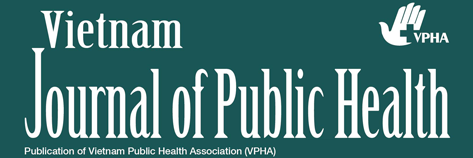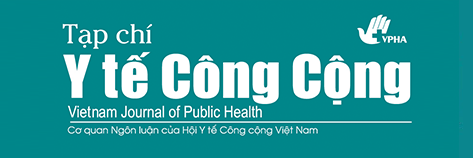Gia tăng gánh nặng bệnh không truyền nhiễm ở Đông Nam Á: THỜI ĐIỂM HÀNH ĐỘNG
Tóm tắt
Đông Nam Á đang phải đối mặt với đại dịch bệnh không truyền nhiễm, hiện tại là nguyên nhân của 60% số tử vong trong khu vực. Khởi nguồn của vấn đề này chính là các yếu tố về môi trường như chính sách khuyến khích thuốc lá, chế độ ăn không lành mạnh và thiếu chế độ tập thể dục đều đặn. Quần thể có thu nhập thấp chịu ảnh hưởng nặng nề nhất, với tỷ lệ tử vong tỷ lệ nghịch với thu nhập quốc gia trung bình. Gia đình bệnh nhân là nơi đầu tiên phải hứng chịu những gánh nặng tài chính, tuy nhiên toàn bộ nền kinh tế quốc gia cũng sẽ bị tác động. Mặc dù các quốc gia đã có nhiều nỗ lực nhằm giảm sự gia tăng của bệnh không truyền nhiễm nhưng chúng ta vẫn cần nỗ lực hơn nữa. Hệ thống y tế cần được thiết kế lại để có thể cung cấp dịch vụ cho các ca bệnh được phát hiện ở hệ thống chăm sóc sức khỏe ban đầu, nhưng được hỗ trợ bởi hệ thống chuyển tuyến tốt. Hệ thống giám sát các yếu tố nguy cơ có thể thay đổi được cần được xây dựng để theo dõi mức độ của vấn đề cũng như hiệu quả của các chương trình can thiệp. Tất cả các cơ quan chính phủ cũng như các ban ngành xã hội cần đồng tâm hiệp lực xây dựng môi trường tốt cho sức khỏe. Tổ chức các quốc gia Đông Nam Á có vai trò đặc biệt trong việc liên kết các quốc gia trong hoạt động phòng chống bệnh không truyền nhiễm trong khu vực. Hoạt động không hiệu quả sẽ ảnh hưởng đến sinh mạng của hàng triệu người. Đây là bài báo thứ 4 trong loạt 6 bài về sức khỏe ở Đông Nam Á.
Từ khóa
Toàn văn:
PDF (English)##submission.citations##
Chongsuvivatwong V, Phua KH, Yap MT, et al. Health and health-care systems in southeast Asia: diversity and transitions. Lancet 201110.1016/S0140-6736(10)61507-3. published online Jan 25. PubMed
WHO. The global burden of disease: 2004 update. Geneva, Switzerland: World Health Organization, 2008.
Mathers CD, Loncar D. Projections of global mortality and burden of disease from 2002 to 2030. PLoS Med 2006; 3: e442. CrossRef | PubMed
Johnston SC, Mendis S, Mathers CD. Global variation in stroke burden and mortality: estimates from monitoring, surveillance, and modelling. Lancet Neurol 2009; 8: 345- 354. Summary | Full Text | PDF(740KB) | CrossRef | PubMed
Porapakkham Y, Pattaraarchachai J, Aekplakorn W. Prevalence, awareness, treatment and control of hypertension and diabetes mellitus among the elderly: the 2004 National Health Examination Survey III, Thailand. Singapore Med J 2008; 49: 868-873. PubMed
Bhalla V, Fong CW, Chew SK, Satku K. Changes in the levels of major cardiovascular risk factors in the multi- ethnic population in Singapore after 12 years of a national non-communicable disease intervention programme. Singapore Med J 2006; 47: 841-850. PubMed
Rampal L, Rampal S, Khor GL, et al. A national study on the prevalence of obesity among 16,127 Malaysians. Asia Pac J Clin Nutr 2007; 16: 561-566. PubMed
Tanchoco CC, Cruz AJ, Duante CA, Litonjua AD. Prevalence of metabolic syndrome among Filipino adults aged 20 years and over. Asia Pac J Clin Nutr 2003; 12: 271- 276. PubMed
Nguyen MD, Beresford SA, Drewnowski A. Trends in overweight by socio-economic status in Vietnam: 1992 to
Public Health Nutr 2007; 10: 115-121. PubMed
WHO. WHO Global InfoBase. http://www.who.int/ncd_surveillance/infobase/en/. (accessed May 31, 2010).
WHO. WHO report on the global tobacco epidemic: implementing smoke-free environments. Geneva, Switzerland: World Health Organization, 2009.
WHO. Preventing chronic diseases-a vital investment. Geneva, Switzerland: World Health Organization, 2005.
WHO. Projections of mortality and burden of disease, 2004-2030. http://www.who.int/healthinfo/global_burden_disease/proj ections/en/index.html. (accessed Sept 10, 2010).
UN Population Division. World Population Prospects: the 2008 Revision Population Database. http://esa.un.org/unpp/. (accessed Sept 10, 2010).
Sun Q, Liu X, Meng Q, Tang S, Yu B, Tolhurst R. Evaluating the financial protection of patients with chronic disease by health insurance in rural China. Int J Equity Health 2009; 8: 42. PubMed
Abegunde DO, Mathers CD, Adam T, Ortegon M, Strong K. The burden and costs of chronic diseases in low- income and middle-income countries. Lancet 2007; 370: 1929-1938. Summary | Full Text | PDF(188KB) | CrossRef | PubMed
Yusuf S, Hawken S, Ơunpuu S, et alon behalf of the INTERHEART Study Investigators. Effect of potentially modifiable risk factors associated with myocardial infarction in 52 countries (the INTERHEART study): case- control study. Lancet 2004; 364: 937-952. Summary | Full Text | PDF(258KB) | CrossRef | PubMed
Karthikeyan G, Teo KK, Islam S, et al. Lipid profile, plasma apolipoproteins, and risk of a first myocardial infarction among Asians: an analysis from the INTERHEART Study. J Am Coll Cardiol 2009; 53: 244-253. CrossRef | PubMed
Asia Pacific Cohort Studies Collaboration. Cholesterol, diabetes and major cardiovascular diseases in the Asia- Pacific region. Diabetologia 2007; 50: 2289-2297. CrossRef| PubMed
Nakamura K, Barzi F, Lam TH, et al. Cigarette smoking, systolic blood pressure, and cardiovascular diseases in the Asia-Pacific region. Stroke 2008; 39: 1694-1702. CrossRef| PubMed
Asia Pacific Cohort Studies Collaboration. The burden of overweight and obesity in the Asia-Pacific region. Obes Rev 2007; 8: 191-196. CrossRef | PubMed
Yoon KH, Lee JH, Kim JW, et al. Epidemic obesity and type 2 diabetes in Asia. Lancet 2006; 368: 1681-1688. Summary | Full Text | PDF(180KB) | CrossRef | PubMed
Yusuf S, Hawken S, Ơunpuu S, et alon behalf of the INTERHEART Study Investigators. Obesity and the risk of myocardial infarction in 27 000 participants from 52 countries: a case-control study. Lancet 2005; 366: 1640- 1649. Summary | Full Text | PDF(140KB) | CrossRef | PubMed
Ni Mhurchu C, Rodgers A, Pan WH, Gu DF, Woodward M. Body mass index and cardiovascular disease in the Asia- Pacific Region: an overview of 33 cohorts involving 310 000 participants. Int J Epidemiol 2004; 33: 751-758. CrossRef | PubMed
Parr CL, Batty GD, Lam TH, et alon behalf of the Asia- Pacific Cohort Studies Collaboration. Body-mass index and cancer mortality in the Asia-Pacific Cohort Studies Collaboration: pooled analyses of 424 519 participants. Lancet Oncol 2010; 11: 741-752. Summary | Full Text | PDF(274KB) | CrossRef | PubMed
Huxley R, Barzi F, Woodward M. Excess risk of fatal coronary heart disease associated with diabetes in men and women: meta-analysis of 37 prospective cohort studies. BMJ 2006; 332: 73-78. CrossRef | PubMed
Lawes CM, Parag V, Bennett DA, et al. Blood glucose and risk of cardiovascular disease in the Asia Pacific region. Diabetes Care 2004; 27: 2836-2842. CrossRef | PubMed
Barzi F, Patel A, Woodward M, et al. A comparison of lipid variables as predictors of cardiovascular disease in the Asia Pacific region. Ann Epidemiol 2005; 15: 405-413. CrossRef | PubMed
. Asaria P, Chisholm D, Mathers C, Ezzati M, Beaglehole R. Chronic disease prevention: health effects and financial costs of strategies to reduce salt intake and control tobacco use. Lancet 2007; 370: 2044-2053. Summary | Full Text | PDF(176KB) | CrossRef | PubMed
ERC. World cigarettes 1: the 2007 report. Suffolk, UK: ERC Statistics International, 2007.
Institute of Medicine. Promoting cardiovascular health in the developing world: a critical challenge to achieve global health. Washington, DC, USA: The National Academic Press, 2010.
Ruiz AJ. Medical nutrition therapy for Filipinos. Manila, Philippines: Merriam and Webster, 2004.
Ng N, Minh HV, Juvekar S, et al. Using the INDEPTH HDSS to build capacity for chronic non-communicable disease risk factor surveillance in low and middle income countries. Glob Health Action 2009 (Suppl 1)10.3402/gha.v2i0.1984. published online Sept 28. PubMed
Malik VS, Schulze MB, Hu FB. Intake of sugar- sweetened beverages and weight gain: a systematic review. Am J Clin Nutr 2006; 84: 274-288. PubMed
globalEDGE. Food and beverage: industry stats. http://globaledge.msu.edu/industries/food-and- beverage/tradestats/. (accessed Sept 10, 2010).
WHO. STEPwise approach to surveillance (STEPS). http://www.who.int/chp/steps/en/. (accessed Sept 10, 2010).
Armstrong T, Bonita R. Capacity building for an integrated noncommunicable disease risk factor surveillance system in developing countries. Ethn Dis 2003; 13: S12-S17. PubMed
WHO. WHO Framework Convention on Tobacco Control. Geneva, Switzerland: World Health Organization, 2003.
WHO. Global strategy on diet, physical activity and health. Geneva, Switzerland: World Health Organization,
WHO. 2008-2013 action plan for the global strategy for the prevention and control of noncommunicable diseases. Geneva, Switzerland: World Health Organization, 2008.
WHO Regional Office for Western Pacific. Western Pacific regional action plan for noncommunicable diseases. Manila, Philippines: World Health Organization Regional Office for Western Pacific, 2009.
WHO Regional Office for the South-East Asia. Strengthening partnerships for integrated prevention and control of noncommunicable diseases-a SEANET-NCD Meeting. New Delhi, India: World Health Organization Regional Office for the South-East Asia, 2009.
Department of Health, Republic of the Philippines. Prevention and control of chronic lifestyle-related noncommunicable diseases in the Philippines: manual of operations, 2009. Manila, Philippines: Department of Health, 2009.
Levy DT, Benjakul S, Ross H, Ritthiphakdee B. The role of tobacco control policies in reducing smoking and deaths in a middle income nation: results from the Thailand SimSmoke simulation model. Tob Control 2008; 17: 53-59. CrossRef | PubMed
UN ESCAP/ADB/UNDP. The Millennium Development Goals: progress in Asia and Pacific. Bangkok, Thailand: United Nation Economic and Social Commission for Asia and the Pacific, 2007.
Food and Agriculture Organization of the UN. The double burden of malnutrition-case studies from six developing countries. Rome, Italy: Food and Agriculture Organization of the United Nations, 2006.
Stein AD, Thompson AM, Waters A. Childhood growth and chronic disease: evidence from countries undergoing the nutrition transition. Matern Child Nutr 2005; 1: 177-184. CrossRef | PubMed
Leowski J, Krishnan A. Capacity to control noncommunicable diseases in the countries of south-east Asia. Health Policy 2009; 92: 43-48. CrossRef | PubMed
UN Development Programme. Human development report 2005. New York, NY, USA: United Nations Development Programme, 2005.
Bloomberg Initiative. Tobacco control grants. http://www.tobaccocontrolgrants.org/. (accessed Sept 10, 2010).
Bill & Melinda Gates Foundation. Funding for grants to combat tobacco use. http://www.gatesfoundation.org/grantseeker/pages/funding-tobacco.aspx. (accessed May 31, 2010).
Alwan A, MacLean DR, Riley LM, et al. Monitoring and surveillance of chronic non-communicable diseases: progress and capacity in high-burden countries. Lancet 201010.1016/S0140-6736(10)61853-3.published online Nov 11 PubMed
Samb B, Desai N, Nishtar S, et al. Prevention and management of chronic disease: a litmus test for health- systems strengthening in low-income and middle-income countries. Lancet 201010.1016/S0140-6736(10)61353-0. published online Nov 11. PubMed
Barr VJ, Robinson S, Marin-Link B, et al. The expanded chronic care model: an integration of concepts and strategies from population health promotion and the chronic care model. Hosp Q 2003; 7: 73-82. PubMed
Ezzati M, Lopez A, Rodgers A, Murray C. Comparative quantification of health risks: global and regional burden of disease attributable to selected major risk factors. Geneva, Switzerland: World Health Organization, 2004.
Lim SS, Gaziano TA, Gakidou E, et al. Prevention of cardiovascular disease in high-risk individuals in low- income and middle-income countries: health effects and costs. Lancet 2007; 370: 2054-2062. Summary | Full Text | PDF(220KB) | CrossRef | PubMed
WHO. WHO CVD-risk management package for low- and medium-resource settings. Geneva, Switzerland: World Health Organization, 2002.
Lock K, Smith RD, Dangour AD, et al. Health, agricultural, and economic effects of adoption of healthy diet recommendations. Lancet 201010.1016/S0140-6736(10)61352-9.published online Nov 11. PubMed
Khor GL. Food-based approaches to combat the double burden among the poor: challenges in the Asian context. Asia Pac J Clin Nutr 2008; 17 (suppl 1): 111-115. PubMed
Mbanya JC, Squire SB, Cazap E, Puska P. Mobilising the world for chronic NCDs. Lancet 201010.1016/S0140-6736(10)61891-0. published online Nov 11. PubMed
The Association of Southeast Asian Nations. The ASEAN Charter. Jakarta, Indonesia: ASEAN Secretariat, 2008.



